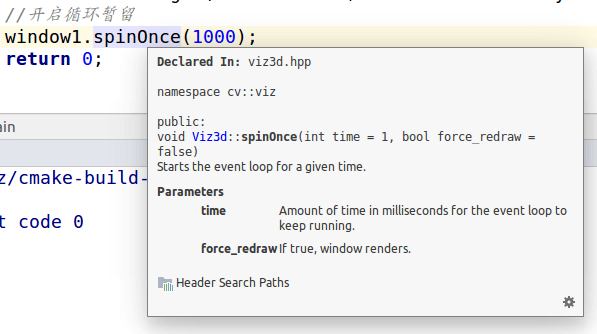

Here, is the output of the help function: I used the help command in python to check what functions were available in the cv2.FileStorage object ( ) and to get a specific node a function 'operator' is defined. but in python it is has to getitem() ( ). Transition_p = fsīut this doesn't work, because in C++, if a function is defined within a class as operator, then it enables the subscripting of that class object.
#Opencv file storage code#
I tried to change this to a python code by : For loading the transition probabilities, the code uses the FileStorage object to read the transition table xml and store the 'transition_probabilities' into a variable 'transition_p' by using the code:įs > transition_p

r 'nuget: OpenCV.Net, 3.4.1' r directive can be used in F Interactive, C scripting and. Please contact its maintainers for support. The NuGet Team does not provide support for this client. I tried to load the files 'OCRHMM_knn_model_data.xml' and 'OCRHMM_transition_table.xml' as shown in the example. For projects that support PackageReference, copy this XML node into the project file to reference the package. Writing to FileStorage To write a file with some OpenCV or other numeric data. I was trying to work with OCRHMMDecoder class to perform some OCR by following the example 'webcam_demo' provided in 'modules/text/samples/'. Basic data persistence and storage Before finishing this chapter.
#Opencv file storage 64 Bit#

the pattern should be fully visible in both left and right image.at each pose, keep the camera still for a short period to avoid motion blur.put the calibration pattern in a clear area.the calibration pattern stays fix, the camera moves around it.It is recommended to first do the acquisition and save the images to later compute the calibration. Once you have created your own calibration pattern you can perform your calibration acquisition. its markers size should be known and accurate.its size should be significant, A3 or more.it should be printed with accuracy, clear black and white, no aliasing.it should be printed or stuck to a flat surface.You can refer to this page to create your own: We need a calibration pattern as a marker and as a world unit reference. Here are the steps to create your own calibration file. To enable this behavior, you have to specify an opencv calibration file as InitParameters::optional_opencv_calibration_file. Using your own calibration will not erase the factory calibration, it will just replace it at runtime if requested using the API. This feature was introduced in ZED SDK version 3.4.
#Opencv file storage how to#
How to Calibrate your ZED camera with OpenCV Calibrationĭespite the fact that ZEDs are factory calibrated you may want to perform your own calibration and use its results in the ZED SDK.


 0 kommentar(er)
0 kommentar(er)
